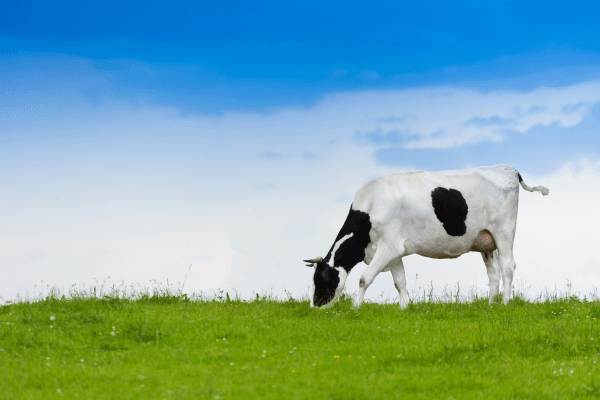The diet we consume can affect the health of us human beings and the environment alike. Modernisation has brought with it, a shift to highly processed diets, obesity, type 2 diabetes, heart disease, cancer etc. As a result, the focus of treatment has changed from a disease-prevention approach to a symptom-based approach.
More than 50% of the ice-free land on Earth is being utilised for agriculture of crops and pastures. This has resulted in increased greenhouse gas emissions (GHGE) from food-related production sources. However, the growing human population has resulted in an increased demand for meat. This can increase GHGE and put agricultural practices and many plant species at risk.
What is “grass fed” meat?
Grass fed meat refers to animals who consume grass and forage as the only feed source post-weaning. The diet must consist of forage (perennial and annual grass varieties), forbes, and cereal grains in a pre-grain state. The animals must not be fed grains and grain-based food during off-season time and insist on providing continuous access to fresh pasture during the growing season as well.
Grass fed vs pasture-raised vs organic meat
These terms, though redundant, may have different meanings. The table below describes the similarities and differences between the 3 terms.
| Grass fed meat | Pasture-raised | Organic meat | |
| Diet of animal | Only grass | Grass and grains | Organic grass without chemical fertilisers and pesticides |
| Hormones and antibiotics | No | No | No |
| Cost | Very expensive | Very expensive | Very expensive |
| Environmental impact | Environmental friendly | Depends on the method of pasture management | Generally environment friendly |
| Nutritional value | Has a better nutritional diet | May vary depending on diet quality | Depends on organic standards |
How can the cattle’s diet influence the nutritional value of meat?
The composition of the feed can greatly influence the nutrition profile of meat. A study revealed that the type of silage provided can influence meat quality in the following ways:
- Clover and legume silage – Increased omega-3 content
- Grass silage – Enhanced beef CLA (conjugated linoleic acids)
- Maize silage (not permitted for grass fed beef) – Increased omega-6 content
Other studies revealed that forage vegetation had the maximum impact on the nutrition composition of meat. Grass increased omega 3 content of meat while it decreased with legume feed.
An interesting study which compared the effect of silage consumption by cattle in the month of February and exclusively grass fed cattle in the month of September revealed that though both groups of cattle had similar diets, the fatty acid profile of silage-fed beef had significantly lower amounts of PUFA (polyunsaturated fatty acids), ALA (alpha lipoic acid), LA (linoleic acid) and CLA (conjugated linoleic acid).
Nutritional benefits of consuming grass fed meat over grain fed meat
There is increasing evidence to support the benefits of consuming grass fed meat and dairy products. The unique nutrition profile sets them apart.
Omega 3 and omega 6 fatty acids
Both these essential fatty acids play a role in maintaining health. However, it is important to maintain an adequate omega-3:omega-6 ratio. There has been an imbalance in the harmony of this ratio over the past few years due to the modern diet. The ideal ratio of omega 3:omega 6 is 4:1. However, the current dietary trend provides 15:1. The imbalance in this ratio can lead to inflammation and other health issues.
Though seafood, nuts and seeds do provide omega-3, they are also found in grass fed animals. The possible explanation is that omega-3 PUFAs are synthesised in the chloroplasts of green plants and algae which fish, cattle, goats etc. consume. However, grain-finished animals have a diminished store of EPA, DHA and omega-3.
Conjugated linoleic acid (CLA)
Conjugated linoleic acid has antioxidant properties and may retard tumour growth. Red meat like beef is a good source of CLA. The digestive system of grain finished animals prevents the good bacteria from producing CLA. While grass fed meat and milk contains higher CLA.
Micronutrients
Vitamins and minerals play a significant role in maintaining the body’s homeostasis. Grass, pasture and forage contain a good quantity of vitamin A precursor (beta-carotene). These carotenoids contribute to the significant yellowish nature of the meat. Minerals such as zinc, sodium, potassium, phosphorus and iron are high in grass fed meat.
Grass fed meat is also rich in antioxidants such as glutathione (produced within the cell), vitamin E, superoxide dismutase etc..
Eating grass fed meat can also help you avoid undesirable glyphosate, GMOs, antibiotics, bacteria and growth hormones.
Is grass fed meat better for the planet?
Worldwide, the leading cause of death is attributed to non-communicable diseases (NCDs). In particular, cardiovascular diseases (CVD) and cancer are the most common causes of death. Inflammation due to diet and environmental factors can be possible root causes for the same.
Epidemiological studies have insisted on the connection between red meat consumption and NCD. However, epidemiological studies do not provide a distinction of the type of meat production system associated with NCD.
The demand for grass fed meat has been increasing and so have regenerative agricultural practices. Regenerative agriculture is a farming method which aims to improve soil health, and biodiversity and reduce carbon footprint. This is also a symbiotic grazing method which farmers usually use for the health of the planet and livestock.
Cons of consuming grass fed meat
- Sourcing grass fed meat of good quality is scarce.
- There are no standardised rules for grass fed meat practices.
- The labelling on meat packaging can be deceptive.
- It is very expensive.
- Grass fed meat may be tougher and have a stronger meat flavour.
The type of meat consumed is an important deciding factor in health. It is still advisable to avoid excessive consumption of meat of any kind. Your preference for the type of meat to consume is completely a personal choice. Always speak to a healthcare professional to understand your personalised protein requirement.
Mayuri,
Dietetic Researcher, Simplyweight





